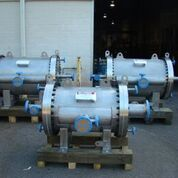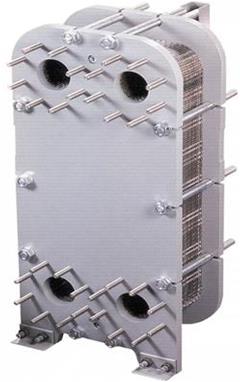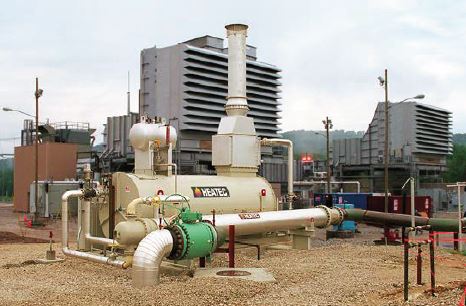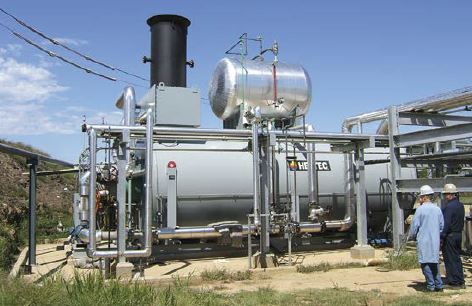Notifications

9 minutes, 41 seconds
-17 Views 0 Comments 0 Likes 0 Reviews

A chrome steel warmness exchanger is a powerful solution utilized in numerous industries for efficient thermal transfer. Known for its sturdiness and corrosion resistance, stainless steel is a preferred fabric in environments where publicity to moisture, chemical compounds, or intense temperatures is not unusual. This kind of exchanger is specifically useful while paired with the shell and tube warmth exchanger design, offering superior warmness transfer overall performance. The use of stainless-steel complements toughness and reduces maintenance wishes, making it ideal for excessive-demand applications. Its versatility and power permit it to operate efficiently beneath high pressure and fluctuating thermal loads.

Stainless metal gives multiple benefits when used in heat exchangers. Its natural resistance Nto rust and corrosion ensures an extended provider lifestyles, even in competitive media. It also withstands excessive thermal cycling without dropping structural integrity, that is essential in lots of commercial approaches. When mixed with the shell and tube warmth exchanger format, it enhances thermal performance whilst minimizing stress drops. Its non-reactive surface makes it suitable for food, pharmaceutical, and chemical industries in which contamination must be avoided. Additionally, chrome steel is easy to clean and hold, which similarly provides to its enchantment.
The shell and tube warmth exchanger is one of the most typically used designs in thermal engineering. It consists of a chain of tubes enclosed within a larger shell, allowing fluids to transfer warmth successfully without blending. When built the use of stainless-steel, these exchangers turn out to be even extra strong, able to dealing with excessive-strain programs and corrosive environments. This design is surprisingly scalable and customizable, which makes it ideal for the entirety from small-scale HVAC structures to big industrial centers. Its tested layout continues to be a benchmark in warmth transfer era.
One of the standout benefits of a stainless steel heat exchanger is its super resistance to corrosion. This makes it a move-to preference for industries coping with harsh chemical substances, saltwater, or acidic fluids. Stainless metallic’s passive oxide layer protects the cloth from chemical reactions, making sure long-term performance. In a shell and tube warmness exchanger configuration, this property enhances operational reliability by way of reducing the danger of material degradation. Fewer breakdowns result in much less downtime and decrease maintenance charges, which drastically boosts productiveness and reduces operational costs.
Thermal efficiency is a middle overall performance metric for any warmth exchanger, and stainless-steel excels on this regard. With excessive thermal conductivity and the capacity to keep performance under extreme temperature fluctuations, chrome steel ensures efficient heat switch. Shell and tube heat exchangers built with stainless steel tubing can acquire amazing results in each heating and cooling programs. Their floor smoothness allows decrease fouling, making sure regular overall performance over time. This translates to better electricity financial savings and extra reliable operations throughout a wide variety of industries.

Stainless steel warmth exchangers are utilized in a extensive range of industries, which include meals processing, prescribed drugs, petrochemicals, and HVAC structures. Their compatibility with the shell and tube warmness exchanger design makes them ideal for processing excessive volumes of fluids in controlled environments. In food and beverage manufacturing, they ensure sanitary conditions, whilst in chemical plants, they take care of corrosive materials easily. Their reliability and compliance with safety requirements make them imperative in each commercial and industrial packages.
Maintenance is a vital element within the total cost of possession of thermal structures. Stainless metallic warmth exchangers require much less upkeep due to their corrosion resistance and structural integrity. In a shell and tube warmness exchanger, this effects in fewer replacements, less common inspections, and extended operational existence. The smooth-to-clean nature of stainless-steel similarly reduces protection downtime. Overall, this results in fee-powerful operation without compromising on performance or protection requirements.
In nowadays’s electricity-conscious international, chrome steel warmness exchangers offer brilliant sustainability advantages. Their efficiency in moving heat means much less strength is wanted to gain preferred temperature modifications, lowering carbon emissions. Shell and tube warmness exchangers, when crafted from chrome steel, enhance those benefits via optimizing the flow of fluids and reducing thermal losses. Additionally, the long lifespan of stainless steel additives reduces fabric waste, helping long-term environmental goals.
The flexibility of stainless steel as a material permits engineers to personalize warmness exchangers for unique applications. Shell and tube warmness exchangers may be tailored in size, configuration, and ability to satisfy unique method needs. Stainless steel adapts well to such changes without compromising performance. Whether it’s coping with high-strain steam, corrosive chemicals, or varying waft charges, a custom stainless steel warmth exchanger may be designed to perform reliably and efficaciously.

Safety is paramount in any commercial setting, and chrome steel warmth exchangers meet stringent fitness and safety standards. The cloth’s resistance to bacteria and contaminants makes it perfect for packages wherein purity is important. Shell and tube warmth exchangers constructed from chrome steel also meet regulatory requirements in food, clinical, and chemical industries. Their strength and leak resistance lessen the danger of injuries, whilst their cleanability helps excessive hygiene requirements.
While the initial investment in a chrome steel warmness exchanger may be higher than a few alternatives, the lengthy-time period fee savings are enormous. Reduced maintenance, fewer replacements, and extended performance all contribute to lower working expenses. Shell and tube warmth exchangers made from stainless-steel frequently supply a better return on investment over their operational lifespan. These systems also add cost via reliability and sturdiness, reducing the overall price of ownership.
Selecting the right warmness exchanger depends to your particular procedure necessities, and chrome steel offers unmatched adaptability. For excessive-pressure, excessive-temperature, or corrosive environments, a chrome steel warmth exchanger in a shell and tube layout is often the most dependable option. Considerations which include fluid kind, flow rate, and space availability must guide your choice. Consulting with professionals and reading procedure parameters can assist identify the most suitable layout, ensuring most performance and sturdiness.

A stainless-steel warmth exchanger sticks out for its durability, performance, and versatility throughout numerous commercial and commercial programs. Whether utilized in chemical processing, food production, or HVAC systems, its resistance to corrosion and thermal pressure makes it a dependable choice. When mixed with the proven shell and tube heat exchanger design, the blessings are magnified—turning in excessive-performance effects in even the maximum annoying environments. The long lifespan, low protection necessities, and high thermal efficiency of stainless-steel make it an investment that maintains to repay through the years. Choosing a stainless-steel warmth exchanger not simplest enhances operational performance but also aligns with electricity-efficient and environmentally responsible practices, ensuring your systems run purifier and longer with surest productivity.

